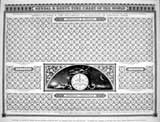| 'The shape of time' - Salon at Blacks, March 3, 2002
29 participants Jeremy Ackerman, Heather Allen, James Anderson, Enzo Apicella, Robin Blackburn,Christopher Bucklow, Gordon Burn, Sacha Craddock, Lucy Day,Donna de Salvo, Norman Thomas de Giovanni, Antony Gormley,James Graham, Susan Hiller, Thomas Kilpper, Darian Leader, Aimone Mantero, Giuseppe Mascoli, Nils Norman, Paddy O'Connor, Sally O'Reilly, Paula Orrel, James Putnam, Matty Pye, Stephen Quirke, Danny Rolf, Vincenzo Ruggiero, Richard Strange, Simon Tegala. The Shape of Time takes its inspiration from the title of a book written by George Kubler, published by Yale University Press in 1962. Perhaps Kubler's most thought provoking reflection is on the relationship between history and the stars. Astronomers look only at old light and there is no other light for them to look at and this old light of dead or distant stars was emitted long ago and it reaches us only in the present. Many historical events, like astronomical bodies, also occur long before they appear. Therefore astronomers and historians have a common quest in that they are both concerned with appearances noted in the present but occurring in the past. According to Kubler "...any work of art is actually a portion of arrested happening, or an emanation of past time ... when an important work of art has utterly disappeared by demolition or dispersal, we still can detect its perturbations upon other bodies in the field of influence." Both astronomers and historians collect ancient signals into compelling theories about distance and composition and they both deal with past events perceived in the present. Kubler draws upon new insights in fields such as anthropology and linguistics and replaces the notion of style with the idea of a linked succession of works distributed in time as recognizably early and late versions of the same action. The result is a view of historical sequence aligned on continuous more than upon the static concept of style - the usual basis for conventional histories of art which frequently concentrate on ideas of symbols or biography. By this view the universe of man-made things simply coincides with the history of art. "Everything made now is either a replica or variant of something made a little time ago and so on back without break to the first morning of human time". To download edited video click here. |
 |
||
| Kendal & Dents time chart of the world.. |
|||
|
|
|||